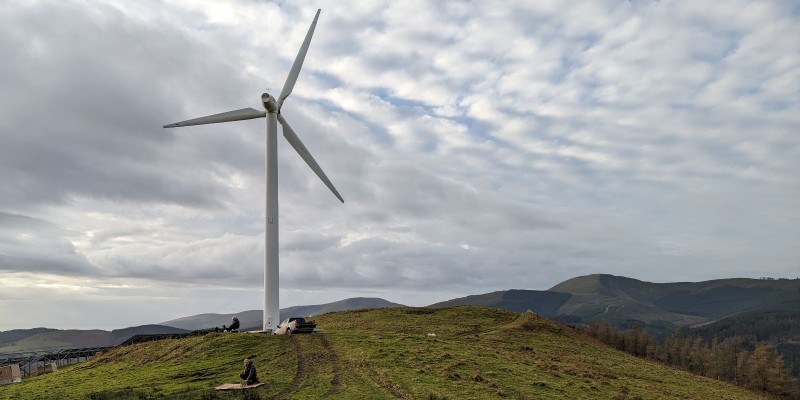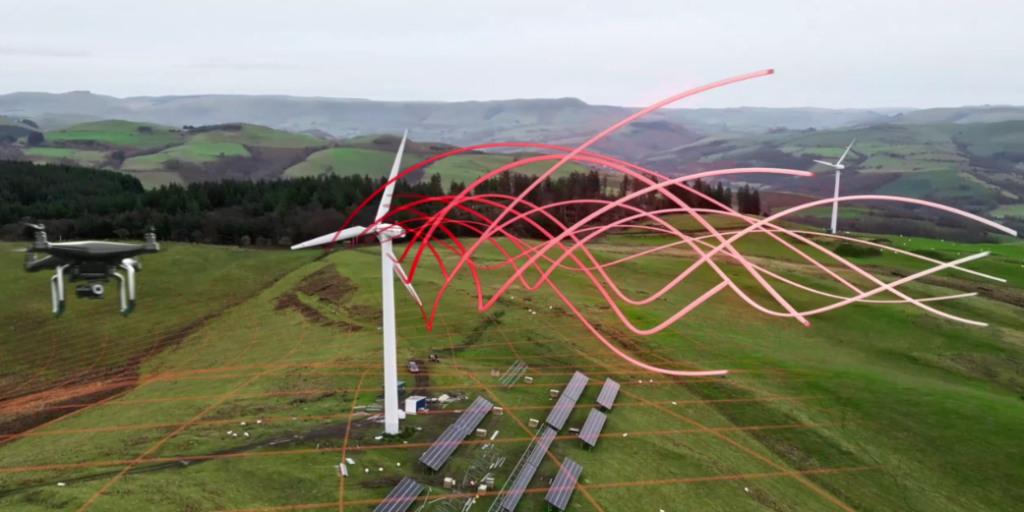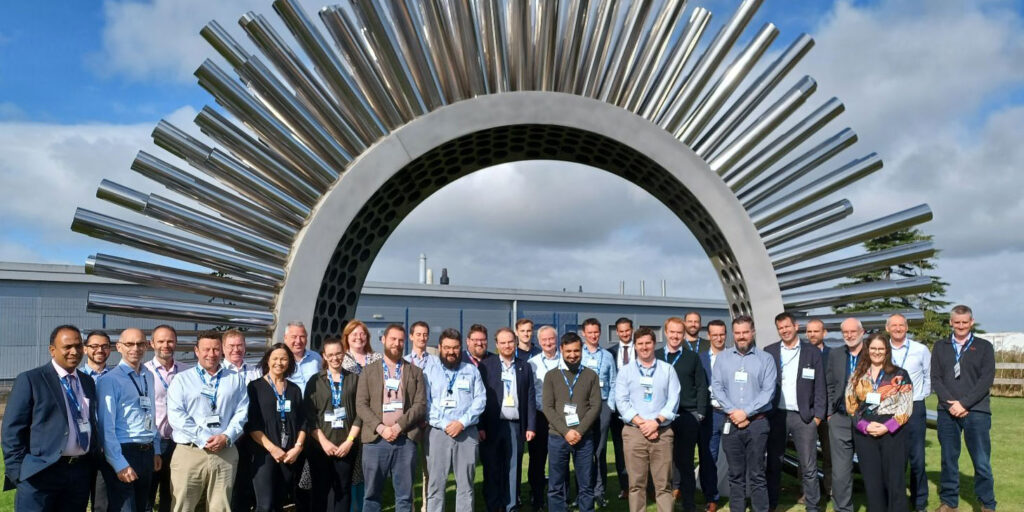
As we round up 2023, we’re delighted to share another successful series of results as part of our SafeZone Project. This project, to further safer and more commercially viable drone flight, is part of the Future Flight Challenge to position the UK as a global leader in aviation.
With our initial project partner, Flare Bright, we have already achieved successful results at Cardiff Airport and St Athan Airport. In our latest trials, we’re focussing on wind farms, with the most recent taking place in November at the Bro Dyfi Community Renewables in Wales.
BDCR came about through the shared interest of local people in and around the town of Machynlleth in mid-Wales in creating a local renewable energy ownership scheme. Our trials actually took place around the Nordtank turbine.
The Zenotech team was joined by SafeZone partners, Flare Bright, as well as Aerialworx on the trials. When it comes to drones, Aerialworx is a leading expert, whether it’s filming the likes of Peaky Blinders, or creating specialist drones for the defence sector.

We are modelling winds around the wind farm turbines and validating them with Airsight, our new service based on high-fidelity CFD simulations combined with live weather data. How did the three businesses work together on the trials?
- Flare Bright was flying their snapshot drone to measure the wake of the turbine.
- Zenotech had a mathematical model of the area which will be validated against the snapshot data.
- Arialworx and Zenotech were also flying drones loaded with the aerodynamic hazard zone information from Airsight. The flights were testing that the system ensured the drones would not fly in areas of predicted high turbulence.
The trials were very useful as we had great access to a site with an operational turbine, meaning we could directly measure the wake.
What were the results?
The trials created another set of positive results. Flare Bright performed a large number of snapshot flights over the week at several distances from the turbine and is satisfied with the dataset collected.
The Aerialworx and Zenotech flights showed that a drone could be programmed to avoid aerodynamic hazards (such as the wake of the turbine) successfully, both in pre-programmed autonomous mode and under manual control of a pilot – an important step forward for drone safety and viability.
These results build on the validation of our Airsight service and prove the wind measurement capability of Flare Bright. In addition to the results from our airport trials, these results demonstrate the system working in the context of a wind farm. Potentially, this offers a new way of measuring turbine wakes. They also validate the CFD results produced by Airsight with the included turbine model.
It was great to work with BDCR who were supportive of our project and trials providing access to the site and to the turbine data – and helping lug kit up and down the hill! We now have real-world power and speed measurements from the turbine at the time of the trials to give another source of validation for the Airsight model and CFD turbine power predictions.
Watch this space for more results in 2024 as we plan to re-run the trials at a larger wind farm…
Check out video footage about our airport trials here.



